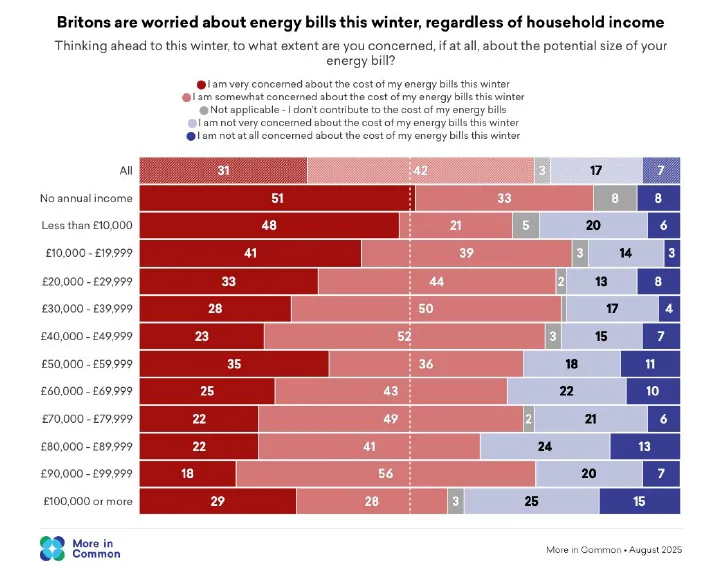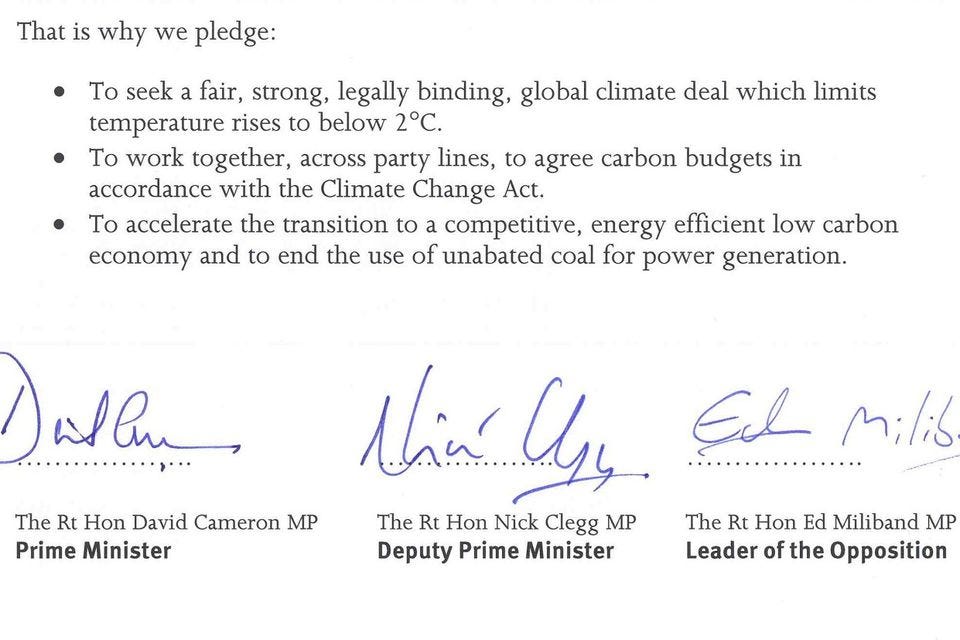
Believer in freedom and democracy. Opposes authoritarianism. Investor in real assets. Man Utd fan. F1 fan. Author of Eigen Values substack.
2 subscribers
How to get URL link on X (Twitter) App


 The press reported that NESO's Holistic Transition to Net Zero would cost £350bn more than Falling Behind. The used this chart as evidence (2/n)
The press reported that NESO's Holistic Transition to Net Zero would cost £350bn more than Falling Behind. The used this chart as evidence (2/n) 

 The Climate Change Act contains important safeguards that allow for emissions reduction targets and carbon budgets to be altered if The Science™ changes (2/n)
The Climate Change Act contains important safeguards that allow for emissions reduction targets and carbon budgets to be altered if The Science™ changes (2/n) 


 Bovaer is a product of the Net Zero cult that has seen UK FIRES call for beef and lamb to eliminated by 2050. Of course they want to reduce methane emissions as well as CO2 (2/n)
Bovaer is a product of the Net Zero cult that has seen UK FIRES call for beef and lamb to eliminated by 2050. Of course they want to reduce methane emissions as well as CO2 (2/n) 

 Consumer energy debt is rising. The amount outstanding for people under formal repayment arrangements rose to a record £1.1bn in 2Q25. Arrears past due for >91 days rose to £3.32bn, giving total debt of £4.43bn (2/n)
Consumer energy debt is rising. The amount outstanding for people under formal repayment arrangements rose to a record £1.1bn in 2Q25. Arrears past due for >91 days rose to £3.32bn, giving total debt of £4.43bn (2/n) 

 First up, cutting carbon taxes on gas-fired electricity and ending Renewables Obligation subsidies early will cut revenues for these generators and asset values will collapse (2/n)
First up, cutting carbon taxes on gas-fired electricity and ending Renewables Obligation subsidies early will cut revenues for these generators and asset values will collapse (2/n)

 First up he has set the budget for offshore wind at £1,080m, split £900m for fixed-bottom and £180m for floating offshore wind. In essence this means the Government expects this auction to add £1.08bn to our bills, which compares to the £2.4bn total CfD cost in 2024/25 (2/n)
First up he has set the budget for offshore wind at £1,080m, split £900m for fixed-bottom and £180m for floating offshore wind. In essence this means the Government expects this auction to add £1.08bn to our bills, which compares to the £2.4bn total CfD cost in 2024/25 (2/n) 

 First, there is widespread concern and stress about energy bills across all income groups, even those households earning >£100,000/yr (2/n)
First, there is widespread concern and stress about energy bills across all income groups, even those households earning >£100,000/yr (2/n) 

 First off, we have the highest industrial electricity prices in the developed world and the second highest domestic prices. Prices like this represent an existential threat to the economy (2/n)
First off, we have the highest industrial electricity prices in the developed world and the second highest domestic prices. Prices like this represent an existential threat to the economy (2/n) 

 The UKW share price has been on a downward trend since peaking in September 2022 despite paying large dividends and buying back shares (2/n)
The UKW share price has been on a downward trend since peaking in September 2022 despite paying large dividends and buying back shares (2/n) 

 Not too long ago, the Climate Change and Net Zero agenda was seemingly impregnable. Party leaders agreed to put the agenda outside democratic control (2/n)
Not too long ago, the Climate Change and Net Zero agenda was seemingly impregnable. Party leaders agreed to put the agenda outside democratic control (2/n) 

 Industrial electricity prices are indeed the highest in the IEA, 63% higher than the median and 3.5X more than Canada (2/n)
Industrial electricity prices are indeed the highest in the IEA, 63% higher than the median and 3.5X more than Canada (2/n) 

 ORIT's share price has been in a trending down since peaking in August 2022. Despite paying out £33.5m in dividends in 2024 and buying back £6.8m of its shares (with more buybacks in 2025), the price keeps falling. The fund aims for income & growth, but it's struggling (2/13).
ORIT's share price has been in a trending down since peaking in August 2022. Despite paying out £33.5m in dividends in 2024 and buying back £6.8m of its shares (with more buybacks in 2025), the price keeps falling. The fund aims for income & growth, but it's struggling (2/13). 

 Windfarm operators including Vattenfall, RWE and Orsted have all issued profit warnings, blaming lower than expected wind speeds. Investment funds TRIG $TRIG and Greencoat UK Wind $UKW have also issued warnings as low wind threatens dividend payouts (2/n)
Windfarm operators including Vattenfall, RWE and Orsted have all issued profit warnings, blaming lower than expected wind speeds. Investment funds TRIG $TRIG and Greencoat UK Wind $UKW have also issued warnings as low wind threatens dividend payouts (2/n)

 In her letter to the CCC, Coutinho asked why the CCC were using £38/MWh as a cost for offshore wind in 2030 when Ed Miliband is offering >3X that, or £117/MWh in Allocation Round 7. She urged Topping to correct the costings before Parliament votes on CB7 (2/n)
In her letter to the CCC, Coutinho asked why the CCC were using £38/MWh as a cost for offshore wind in 2030 when Ed Miliband is offering >3X that, or £117/MWh in Allocation Round 7. She urged Topping to correct the costings before Parliament votes on CB7 (2/n)

 The scale is huge. In 2018, BEIS estimated £1.28-3.64bn for 37 wind farms, costs spiking from 2028. Now, with 16GW installed, my analysis shows ~£4.7bn over 10-15 years—at £293m/GW. More farms mean more costs. (2/18)
The scale is huge. In 2018, BEIS estimated £1.28-3.64bn for 37 wind farms, costs spiking from 2028. Now, with 16GW installed, my analysis shows ~£4.7bn over 10-15 years—at £293m/GW. More farms mean more costs. (2/18) 

 In NESO's CP2030 plan, they assumed onshore wind would cost £73/MWh, offshore £83/MWh and solar £71/MWh. This is well below their estimates for gas-fired generation, but gas costs were inflated by ridiculous carbon taxes (2/n)
In NESO's CP2030 plan, they assumed onshore wind would cost £73/MWh, offshore £83/MWh and solar £71/MWh. This is well below their estimates for gas-fired generation, but gas costs were inflated by ridiculous carbon taxes (2/n) 

 The price cap went up £35 from £1,720 to £1,755 for dual fuel households paying by direct debit (2/n).
The price cap went up £35 from £1,720 to £1,755 for dual fuel households paying by direct debit (2/n). 

 The latest data from the ONS shows 690,900 green jobs in total. Of these 45,200 were employed in green charities (think billionaire funded propaganda units) & 19,400 were employed in “managerial activities of government bodies" (including government propaganda units) (2/n)
The latest data from the ONS shows 690,900 green jobs in total. Of these 45,200 were employed in green charities (think billionaire funded propaganda units) & 19,400 were employed in “managerial activities of government bodies" (including government propaganda units) (2/n)

 The rights issue announcement sent the share price into a tailspin, closing last week at an all time low, some 85% below the peak in Jan 2021. (2/n)
The rights issue announcement sent the share price into a tailspin, closing last week at an all time low, some 85% below the peak in Jan 2021. (2/n) 